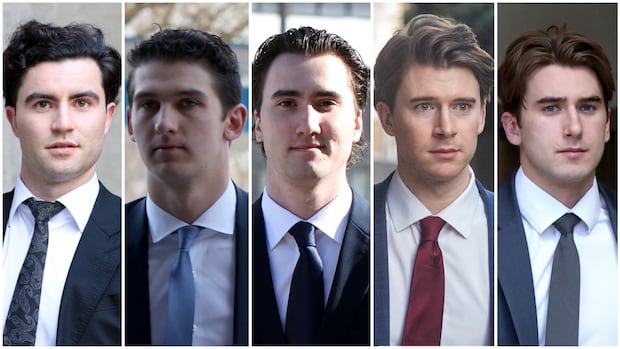Why this survivors’ advocate is watching the trial closely
Phone and surveillance videos presented as evidence have shown players celebrating their world junior win at a London bar after a Hockey Canada gala in June 2018.
There’s also a focus on the complainant, something of particular interest to Shannon Moroney, a Toronto-based author, trauma therapist and survivors’ advocate.
“I’m going to be watching closely to see how the complainant on the stand is treated, and if she is subject to the typical tropes and allegations against her character that we so often see in these types of trials,” says Moroney.
“I’m also going to be watching to see on the defence side what their strategy is for this. I’m fearful that this is going to be a trial that is about pushing blame around in so many different directions that nobody actually ends up taking accountability.”
In the video footage, the players are seen dancing, drinking, mugging for the camera and in some cases chatting with the complainant, known in court as E.M.
The Crown urged the jury to keep an open mind about what sexual assault — and consent — can look like.
Too often in court, Moroney says, it can become more about poking holes in testimony and looking for technicalities than searching for the truth, “and it can feel much more like it is the complainant who is on trial than the actual accused.”
Moroney says that’s why many people don’t come forward with sexual assault allegations.
“You have to be a perfect victim on the stand.”
